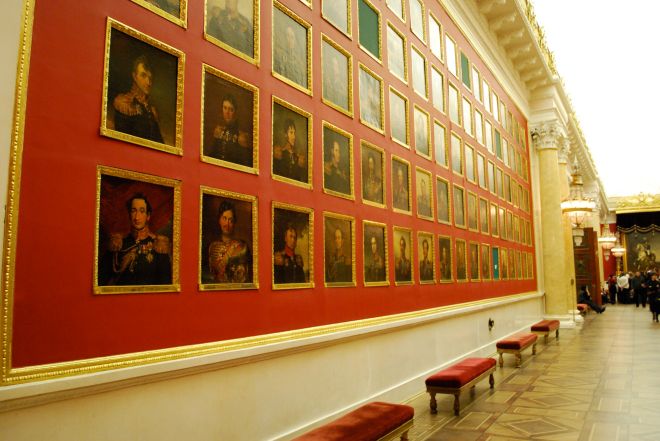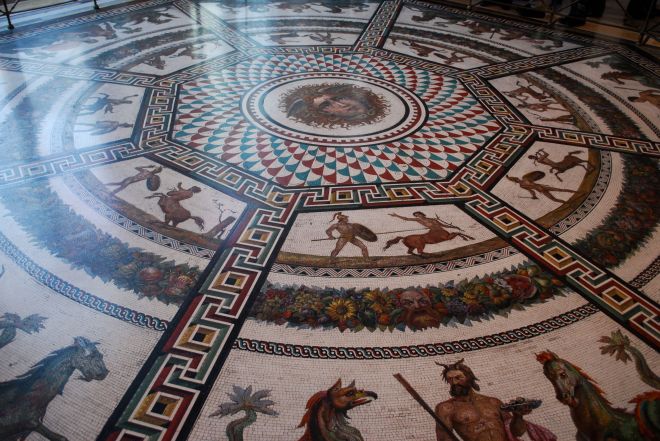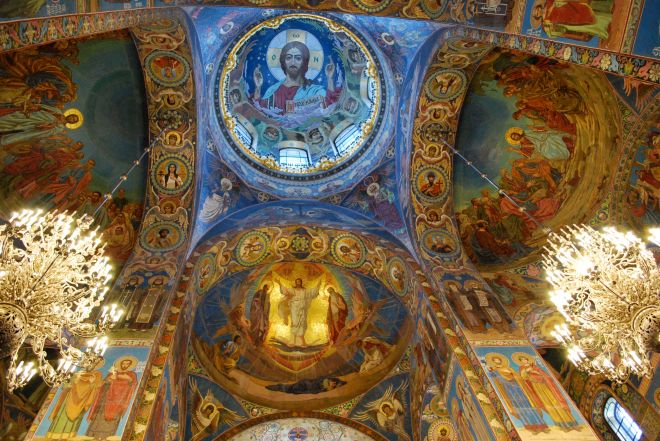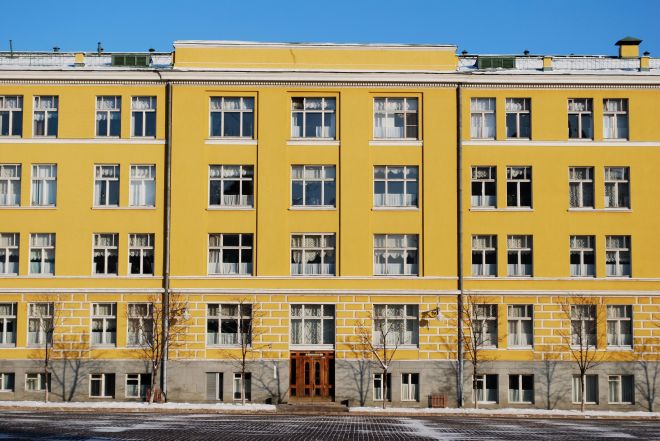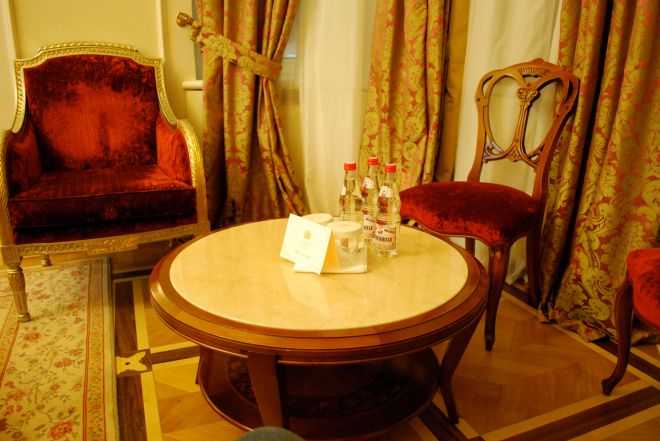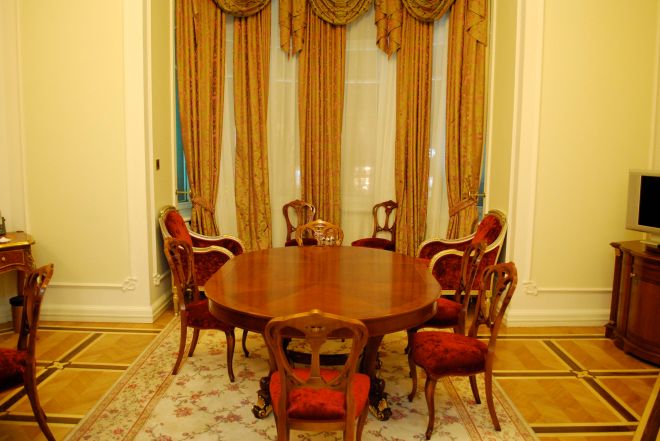St. Petersburg, Russia
Having spent our entire time in Russia within its two largest cities, we were excited this morning to spend our last day on a trip to the surrounding countryside. Our destination was Catherine Palace, designed by Rastrelli, the home that gradually became the favorite country estate of the royal family. In fact, in 1837, Russia’s first railway line was built between St. Petersburg and the palace in order to shuttle the imperial family back and forth.
Only appropriately, we opted to take the far less luxurious subway, followed by a 20-minute ride in a marshrutky, essentially a small mini-van that follows a set route.


We arrived just before noon and, unsurprisingly, joined the massive line outside. Strangely enough, entering after an hour’s wait, we found the palace lobby nearly empty. While we appreciate the Face Control that limits the number of tourists inside at any given time, could the Russians at least spare us and allow us to wait inside?
Our English-speaking tour guide explained that most of the exterior and 20-odd rooms of the palace were razed during World War II. Since then, they have been amazingly restored in the classical style in which they were originally built. We started in the huge, frescoed Great Hall, with its mirrors and fantastic gilded woodcarvings.




Next was the State Staircase, followed by the immense Picture Gallery. The Green Dining Room showcased a different classical style, with its many intricate wall carvings and inlaid floor.



The highlight of the palace was the amazing Amber Room, completely covered with exquisitely engraved amber panels. The room, which was destroyed in the war, was rebuilt with support of the German government. It took 25 years to restore the room to its pre-war brilliance.

We returned to the hotel and packed up. For our last meal, we decided to do what the Russians do now: get sushi. It has become all the rage here and we found a trendy spot down the street from our hotel on Nevsky Prospekt. Sitting down after midnight, we ordered about 15 rolls, and waited. And waited, and waited. An hour later, there was still nothing. We got up and walked out, only to be chased down the street by the waiter who then overcharged us for our drinks.
It was, we decided, a fitting end to the trip.
Derek and Burt fly back to the States tomorrow. I’ve got an 8-hour overnight train to Moscow, followed by an 11-hour flight to D.C. and connection to Raleigh. It should take just about 27 hours of travel to get me back to Carolina.
But after three weeks on the road, you can be sure that I’m looking forward to it.











